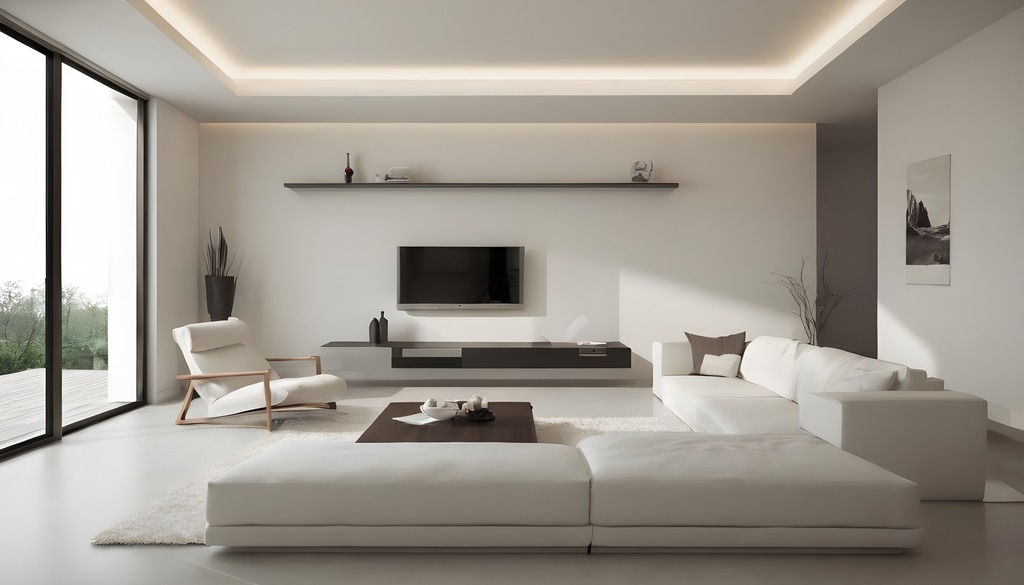Welcome to the world of minimalist living rooms, where less is truly more. In this article, we will explore the art of arranging a minimalist living room and discover how simplicity can enhance both style and functionality. Whether you are downsizing your space, craving a clutter-free environment, or simply embracing a more minimalist lifestyle, we have you covered.
What is a minimalist living room?
A minimalist living room is a space designed to be clean, uncluttered, and focused on the essentials. It is characterized by its simplicity, functionality, and intentional design choices. The goal of a minimalist living room is to create a serene and peaceful environment that promotes relaxation and mindful living. By eliminating excess and unnecessary items, a minimalist living room allows for better organization, easier maintenance, and a greater sense of calm.
Minimalist living rooms often feature neutral color palettes, clean lines, and a limited number of carefully selected furniture pieces and decor items. The focus is on quality over quantity, with each element serving a purpose and contributing to the overall aesthetic and functionality of the space.
Benefits of a minimalist living room
Embracing a minimalist living room has numerous benefits that go beyond aesthetics. Here are a few advantages of adopting a minimalist approach to your living space:
- Reduced stress: A cluttered and disorganized living room can contribute to feelings of stress and overwhelm. By simplifying your space, you create a calming environment that promotes relaxation and peace of mind.
- Increased focus: With fewer distractions and visual clutter, a minimalist living room allows you to focus on what truly matters. Whether it’s spending quality time with loved ones, reading a book, or engaging in a hobby, you can fully immerse yourself in the present moment.
- Easier maintenance: Cleaning and maintaining a minimalist living room is much simpler and less time-consuming. With fewer items to dust, decluttering becomes a breeze, freeing up more time for the things you love.
- Enhanced functionality: By carefully curating your furniture and decor, you can optimize the functionality of your living room. Every piece serves a purpose and contributes to the overall flow and usability of the space.
- Aesthetic appeal: A minimalist living room exudes elegance, sophistication, and timeless style. The clean lines, neutral colors, and intentional design choices create a visually pleasing environment that never goes out of fashion.
Minimalist living room design principles

To create a minimalist living room, it’s essential to understand and apply the key design principles that define this style. These principles will guide you in making intentional choices that promote simplicity and functionality. Here are the fundamental principles of minimalist design:
- Simplicity: The essence of minimalism lies in simplicity. Embrace clean lines, uncluttered spaces, and a minimalist color palette. Avoid excessive ornamentation and opt for simplicity in all aspects of your living room design.
- Functionality: Minimalist design prioritizes functionality. Choose furniture and decor that serve a purpose and enhance the usability of the space. Avoid unnecessary items that add visual clutter without contributing to the functionality of the room.
- Negative space: Negative space refers to the empty areas in a room. In a minimalist living room, negative space is as important as the objects themselves. Allow for breathing room and create a sense of balance and harmony by strategically incorporating empty spaces.
- Quality over quantity: Instead of filling your living room with numerous low-quality items, focus on investing in high-quality pieces that will stand the test of time. Choose furniture and decor made from durable materials and prioritize craftsmanship.
- Neutral color palette: A minimalist living room typically features a neutral color palette, with shades of white, beige, gray, and earth tones. These colors create a sense of calm and provide a timeless backdrop for your furniture and decor.
- Texture and materials: To add visual interest to your minimalist living room, incorporate different textures and materials. Consider using natural materials like wood, stone, and linen to create a warm and inviting atmosphere.
By incorporating these principles into your design decisions, you can create a minimalist living room that is both visually appealing and functional.
